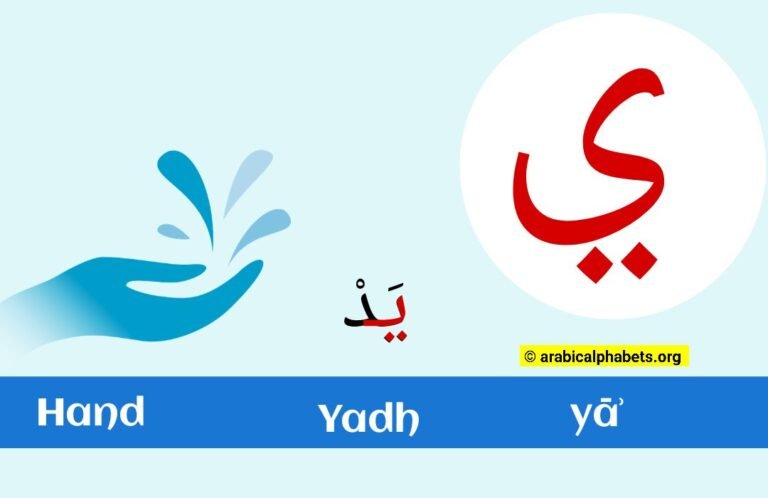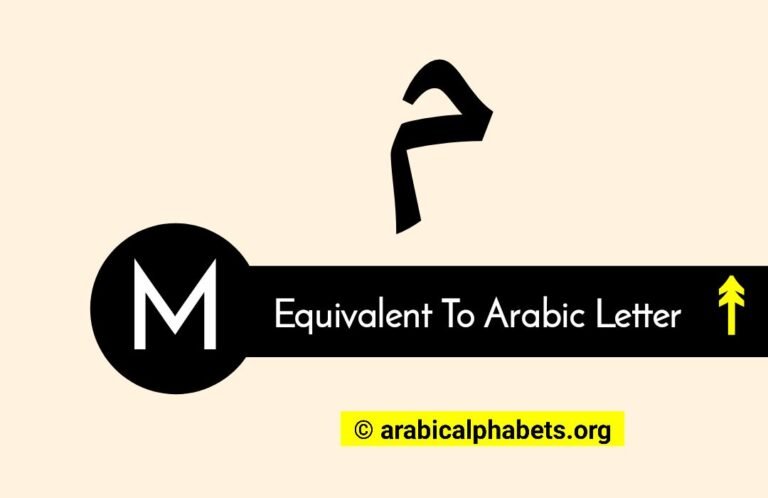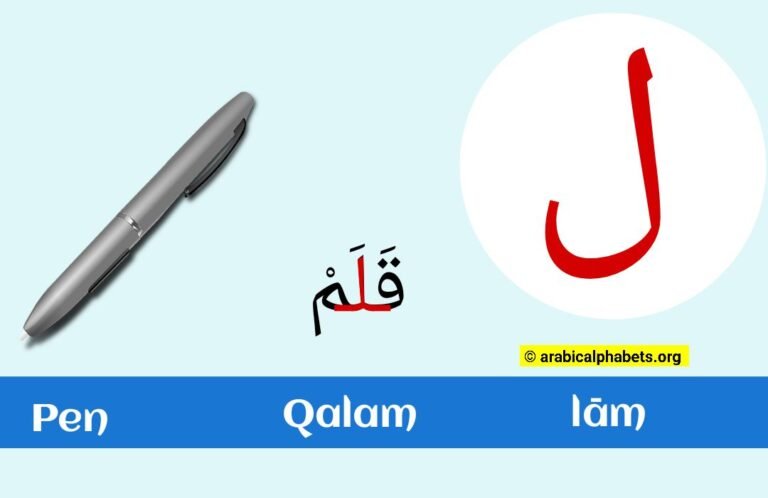Twenty-first Arabic Alphabet Letter
The Arabic alphabet is captivating and intricate, with each letter holding its unique beauty and significance. Among the 28 letters that make up this ancient script, one stands out as mysterious and enigmatic – the 21st letter.
Often overlooked or overshadowed by its more commonly known counterparts, this letter possesses an allure that captivates linguists and scholars alike. With its graceful curves and distinct form, it holds secrets waiting to be unraveled. Join us to explore the nuances and hidden meanings behind this seemingly unassuming yet intriguing character of the Arabic alphabet.
Twenty-first Arabic Alphabet Letter Full Details Here
Welcome to a comprehensive exploration of the twenty-first letter of the Arabic alphabet, “Qāf” (ق). This guide will delve into its pronunciation, written form, usage, and cultural significance within the Arabic language.
1. Introduction to Qāf (ق): “Qāf” holds the twenty-first position in the Arabic alphabet, playing a crucial role in shaping the language’s phonetics and structure.
2. Pronunciation of Qāf: The pronunciation of “Qāf” involves producing a sound similar to the English “k,” but with a distinctive guttural quality.
3. Written Form of Qāf: “Qāf” (ق) features a unique shape that differentiates it from other letters. Its visual representation contributes to the elegance of the Arabic script.
4. Positional Variations: “Qāf” can appear in initial, medial, and final positions within Arabic words. Its form changes based on its location in a word.
5. Vocabulary and Usage: Explore words containing the letter “Qāf,” such as “قمر” (moon), “قلب” (heart), and “قط” (cat). Please familiarize yourself with its role in everyday language.
6. Influence on Grammar: Understanding “Qāf” is pivotal for constructing grammatically correct sentences. It impacts verb conjugations, noun-adjective agreements, and sentence structure.
7. Cultural and Linguistic Significance: “Qāf” transcends its linguistic function, holding cultural importance in poetry, literature, and expressions. Exploring its use deepens your understanding of Arabic communication and cultural nuances.
8. Calligraphic Aesthetics: “Qāf” is often featured in Arabic calligraphy due to its unique shape. Different calligraphic styles allow artists to interpret their designs creatively.
9. Writing Proficiency: Practice writing “Qāf” in isolation and within words to develop confident handwriting skills. Mastery of its distinct form contributes to overall Arabic script expertise.
10. Memory Techniques: Use mnemonic devices to aid in memorizing “Qāf.” Associating the letter with memorable images or words aids retention.
11. Advancing to Reading: Learn how “Qāf” combines with other letters to form words. Develop the skills necessary to read and understand basic words and sentences.
12. Cultural Context: Delve into the cultural and historical context of “Qāf.” Understand its evolution, usage in different linguistic scenarios and role in shaping Arabic expression.
13. Learning Resources: Utilize downloadable practice materials, audio resources, and supplementary tools tailored to your learning style and pace.
14. Progressing on the Arabic Journey: Mastery of “Qāf” is a stepping stone in your Arabic journey. Gain insights into what lies ahead, whether advanced language skills or exploring regional dialects.
15. Enriched Language Experience: By embracing the intricacies of “Qāf,” you’re forging a deeper connection with Arabic culture and heritage. This knowledge enhances your language journey.
Embark on exploring the Arabic letter “Qāf” (ق) with curiosity and dedication. Each letter mastered brings you closer to effective communication and an enriched understanding of the Arabic-speaking world.
Table Description -> A – Serial Number, B – Isolated Form, C – Trans-literation, D – Letter name, E – Letter Name In Arabic Script.
| A | B | C | D | E |
|---|---|---|---|---|
| 21 | ق | q | qāf | قَاف |
Get 1 to 28 Arabic Letters Order
Table Description -> A – Serial Number, B – Isolated Form, C – Trans-literation, D – Letter name, E – Letter Name In Arabic Script.
| A | B | C | D | E |
|---|---|---|---|---|
| 1 | ا | ā | ʾalif | أَلِف |
| 2 | ب | b | bāʾ | بَاء |
| 3 | ت | t | tāʾ | تَاء |
| 4 | ث | th | thāʾ | ثَاء |
| 5 | ج | j | jīm | جِيم |
| 6 | ح | ḥ | ḥāʾ | حَاء |
| 7 | خ | kh | khāʾ | خَاء |
| 8 | د | d | dāl | دَال |
| 9 | ذ | dh | dhāl | ذَال |
| 10 | ر | r | rāʾ | رَاء |
| 11 | ز | z | zāy | زَاي |
| 12 | س | s | sīn | سِين |
| 13 | ش | sh | shīn | شِين |
| 14 | ص | ṣ | ṣād | صَاد |
| 15 | ض | ḍ | ḍād | ضَاد |
| 16 | ط | ṭ | ṭāʾ | طَاء |
| 17 | ظ | ẓ | ẓāʾ | ظَاء |
| 18 | ع | ʿ | ayn | عَيْن |
| 19 | غ | gh | ghayn | غَيْن |
| 20 | ف | f | fāʾ | فَاء |
| 21 | ق | q | qāf | قَاف |
| 22 | ك | k | kāf | كَاف |
| 23 | ل | l | lām | لاَم |
| 24 | م | m | mīm | مِيم |
| 25 | ن | n | nūn | نُون |
| 26 | ه | h | hāʾ | هَاء |
| 27 | و | w | wāw | وَاو |
| 28 | ي | y | yāʾ | يَاء |
Embark on a Journey of Learning Arabic Letters: Expert Tips and Techniques
Welcome to “Embark on a Journey of Learning Arabic Letters: Expert Tips and Techniques.” This comprehensive guide is your gateway to unlocking the beauty and intricacy of the Arabic alphabet. We aim to equip you with expert insights, practical tips, and effective techniques that will empower you to navigate the world of Arabic letters confidently. Let’s dive into the full details of this enriching learning resource:
1. Introduction to Arabic Letter Learning: Begin your journey by understanding the importance of Arabic letters as the foundation of the language. Gain insights into the role of letters in forming words and conveying meaning.
2. Progressive Learning Approach: Discover a systematic approach that guides you from fundamental concepts to advanced skills. Each step you take builds upon the previous, fostering a solid understanding.
3. Pronunciation Mastery: Master the nuances of Arabic letter pronunciation through comprehensive explanations and audio resources. Develop the ability to articulate sounds accurately.
4. Letter Forms and Variations: Explore the different forms of letters based on their position in a word—initial, medial, and final. Appreciate the artistry of Arabic calligraphy in shaping these forms.
5. Building Vocabulary: Immerse yourself in the world of Arabic vocabulary by exploring words associated with each letter. Enhance your language skills while building a useful lexicon.
6. Cultural Context: Understand Arabic letters’ cultural and historical significance. Uncover their role in literature, poetry, and daily expressions, enriching your language experience.
7. Effective Writing Techniques: Practice writing each letter in isolation and within words. Discover techniques to develop legible and confident handwriting in Arabic script.
8. Mnemonics for Memorization: Harness mnemonic devices to aid in memorizing Arabic letters. Associate letters with images, stories, or patterns for improved retention.
9. Formation of Basic Words: Witness the magic of combining letters to create simple words. Bridge the gap between individual letters and practical language usage.
10. Interactive Learning Activities: Interactive exercises reinforce letter recognition, pronunciation, and word formation. Make learning dynamic and enjoyable.
11. Visual Aids and Resources: Visual aids, diagrams, and charts provide a clear visual representation of letter forms and their variations, facilitating your learning process.
12. Advancing Beyond Letters: Learn about the natural progression after mastering Arabic letters. Explore advanced language skills, dialects, and areas of specialization.
13. Cultural Enrichment: As you delve into Arabic letters, you’re immersing yourself in the culture and heritage of Arabic-speaking communities. This knowledge deepens your language experience.
14. Practical Application: “Embark on a Journey of Learning Arabic Letters” equips you with essential skills for further language study. Progress confidently in reading, writing, and communicating in Arabic.
Embark on this transformative journey of learning Arabic letters with dedication and enthusiasm. Each letter mastered brings you closer to effective communication and a deeper connection with the beauty of the Arabic language.
Conclusion Points
In conclusion, our comprehensive exploration of the twenty-first Arabic alphabet letter, “Qāf” (ق), has illuminated its essential role and profound significance in the Arabic language. By delving into its pronunciation, written form, grammatical implications, and cultural associations, we’ve gained valuable insights into its contributions to the depth and richness of Arabic communication.
As you continue learning Arabic, remember that each letter, including “Qāf,” is pivotal in building your language skills. Embrace the uniqueness of “Qāf” as it connects you to cultural expressions, linguistic nuances, and the broader Arabic-speaking community. With each letter mastered, you’re progressing toward confidently engaging with the Arabic language’s profound heritage and eloquent communication.
FAQs
Where does “Qāf” (ق) stand in the Arabic alphabet?
“Qāf” is the twenty-first letter in the Arabic alphabet.
How is “Qāf” (ق) pronounced?
“Qāf” is pronounced as a guttural sound, similar to the English “k,” but produced further back in the throat.
Describe the written form of “Qāf” (ق).
The written form of “Qāf” resembles the English letter “q,” but with a unique shape that adds to the beauty of Arabic script.
In which positions can “Qāf” (ق) appear within Arabic words?
“Qāf” can appear in words’ initial, medial, and final positions. Its form changes depending on its position.
Could you provide examples of words containing “Qāf” (ق)?
Certainly! Words like “قلم” (pen), “قمر” (moon), and “قلب” (heart) feature the letter “Qāf.”
How does “Qāf” (ق) influence Arabic grammar?
Understanding “Qāf” is essential for constructing grammatically accurate sentences. It affects verb conjugations, noun-adjective agreements, and overall sentence structure.
Does “Qāf” (ق) have cultural significance?
Beyond its linguistic role, “Qāf” holds cultural importance in poetry, literature, and expressions, offering insights into Arabic communication and cultural heritage.
Is “Qāf” (ق) commonly found in Arabic calligraphy?
Due to its distinct shape, “Qāf” is often featured in Arabic calligraphy. Different calligraphic styles allow for creative interpretations.
How can I practice recognizing and writing “Qāf” (ق)?
Regularly practice writing “Qāf” in isolation and within words to enhance your recognition and penmanship skills.
Where can I access additional resources to learn about “Qāf” (ق) and other Arabic letters?
Explore textbooks, online courses, language apps, and language exchange platforms to deepen your understanding of “Qāf” and other Arabic letters.
These FAQs provide comprehensive insights into the Arabic letter “Qāf.” As you delve into its intricacies, you’re better prepared to navigate the world of Arabic language and culture.






